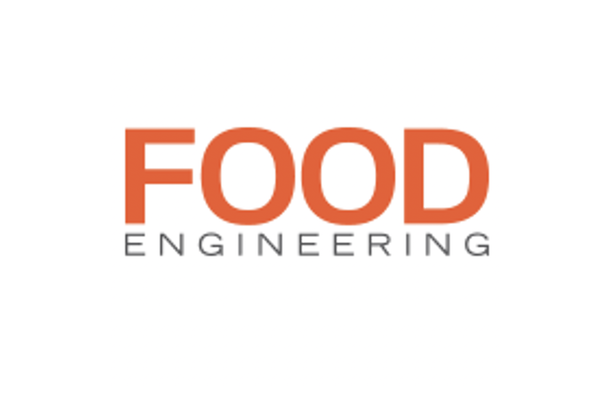FE: What are the driving factors for waste management in the food industry?
Doug Lawson: As with many other industries, manufacturing is beset by major challenges that are made worse by hyper shifts in supply and demand. Three main areas that are persistently an issue for manufacturers are quality and safety issues, waste and underperforming assets, and high environmental impact.
The root cause of these problems is that manufacturing is an inherently complex domain, especially when viewed across a supply chain in which events and practices early in the supply chain can have serious and unexpected consequences later in the chain. Being nimble and staying ahead of the curve allows you to not only reduce waste but decrease recalls and keep your workers safe, as well as minimize your environmental footprint.
FE: How can waste management and recycling benefit a food processor’s bottom line?
Lawson: Unmanaged waste directly and significantly affects margins and profitability for food processors. Profitability in food processing is particularly sensitive to cost of goods sold (COGS), and the naturally high variance in agricultural raw materials leads to many forms of waste that are, to a large extent, hidden from financial systems and “baked in” to fixed assumptions that are frequently inaccurate. Effective waste management can:
- Improve yield by reducing the quantity of raw materials needed to make a given quantity of finished goods.
- Create new revenue opportunities.
- Reduce energy costs.
- Reduce disposal costs.
- Eliminate noncompliance events and the associated costs.
FE: What trends are you seeing in waste disposal, recycling and waste management in general in the food processing marketspace?
Lawson: We see major trends that are having a deep impact on the industry:
- A shift to eliminating waste in the first place.
- A change in perspective from local optimization to system-level optimization. As an example, there are many practices in agriculture and raw material storage/handling that negatively affect the manufacturing/processing portion of the supply chain. Being able to identify these causes and effects in-line during operations enables businesses to avoid and mitigate the problems.
- Building the system-level thinking enables the more creative repurposing of byproducts. Practical examples that we have seen include: 1. Oats that cannot be made gluten-free were previously disposed as a byproduct. It turns out the physical attributes that make them hard to clean result in oats that can be sold at a premium price for certain multigrain cereal bars; 2. The byproduct from making yogurt is a valuable ingredient for baby formula; and 3. Onions rejected for appetizer use are ideal for essence oils.
- Energy waste is a growing concern.
FE: What are the biggest challenges for food manufacturing plants when it comes to waste management? How are they overcome?
Lawson: Embracing these trends requires deep cultural shifts from a business collaboration and a technical perspective. System-level thinking becomes possible when data exchange between supply chain actors becomes much more detailed, granular, trustable and mutual than it is today. This necessitates different attitudes toward information sharing than historical business relationships expected.
It also requires significant shifts in the technical systems supporting the manufacturing process. Current systems are vertically fragmented within business silos (brittle boundaries between automation, execution, planning and financial systems) and horizontally fragmented between silos (minimal technical synergy between agriculture, logistics, storage, processing, distribution and retail). Systems exist today to overcome such fragmentation, but legacy assumptions held by people present barriers to adoption.
FE: What tips can you offer processors regarding waste management for the greatest impact on their bottom line?
Lawson: The greatest impact will happen when you can view waste as a systemic problem that has its roots in places that only the executive suite can set in motion to solve. System-level thinking at the granularity needed to affect deep change is best driven from the highest level. This will involve new levels of interenterprise collaboration in supply chains and expectations about new levels of performance and capability of supporting systems. It does not call for massive cost and complexity, but it does require a shift in thinking.
FE: Final thoughts?
Lawson: Historically, food manufacturers have focused on analyzing equipment efficiency, but today material flow is becoming just as important for two main reasons.
The first is it provides actionable insights. With material flow, you can gather information about the raw materials, quality attributes, movement and equipment involved in the process of creating your final product. Then, you can correlate that information to the quality and yield of the process. For example, analytics afford you the opportunity to correlate a certain method of potato storage with the quality of the french fry. You might identify storage unit CO2 levels are impacting your end product, with the fries being crispier, for example. These correlations also can help to identify areas of machine inefficiency, production and energy waste.
The second has to do with provenance, or the chronology of the ownership, custody or location of a product. Material flow analytics can easily prove the provenance of your foods and the amount of waste.
There are some cases in which the provenance of food is critical for other reasons. For example, the origin of the product might be relevant if there is an outbreak of foodborne illnesses, or if the product is originating from a country that is known to inflict human rights abuses on workers.






